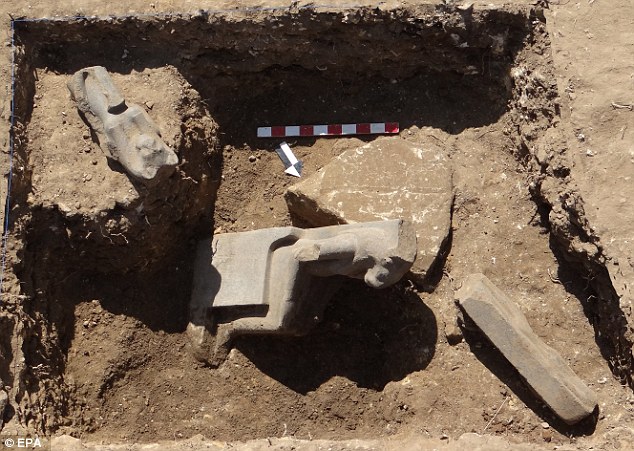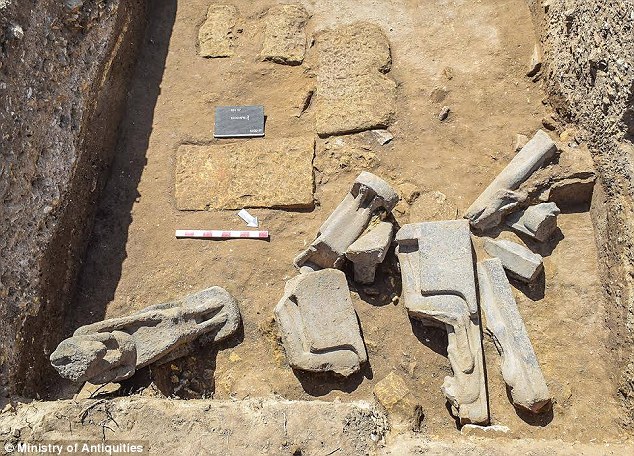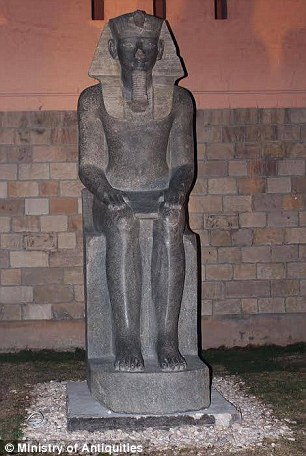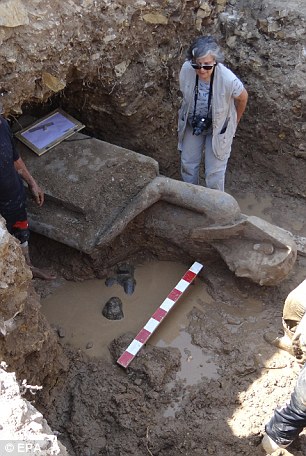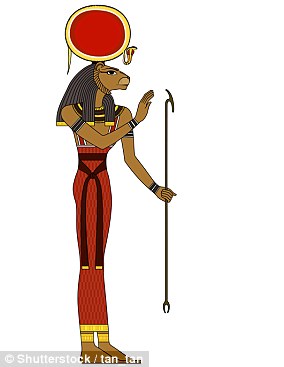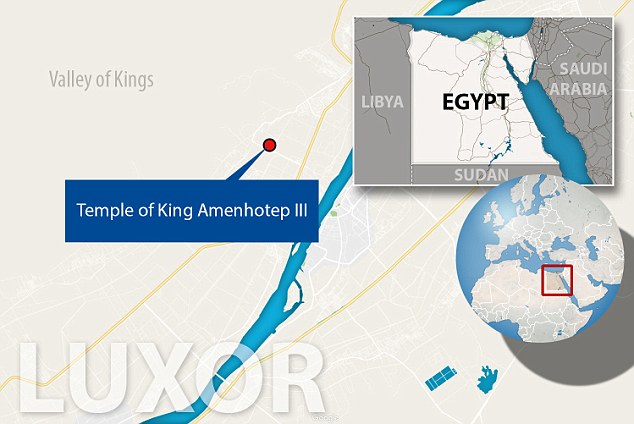DepthReading
The lion-headed goddess of war protecting a pharoah: Archaeologists discover 66 statues of Sekhmet buried to ward off evil from the temple of Amenhotep III
Dozens of statues depicting a lion-headed warrior goddess have been unearthed at the temple of Amenhotep III, where they were arranged thousands of years ago to protect the ruler from evil.
Researchers with a German archaeological mission in Egypt discovered 66 well-preserved statues of Sekhmet near Luxor, the site of the ancient city Thebes.
The statues show the goddess in both the sitting and standing position, holding a sceptre of the papyrus flower and the symbol of life.
Archaeologists with the Colossi of Memnon and Amenhotep III Temple Conservation Project, led by Dr Hourig Sourouzian, discovered the statues during restoration efforts at the funerary temple of Amenhotep III, according to the Ministry of Antiquities’ official Facebook page.
Sekhmet was thought to be a powerful goddess, and the ancient pharaoh requested many statues be made in her image to protect the temple from danger.
Each of the 66 statues is made from diorite stone, a material that was also used to build temples, according to the archaeologists.
The statues have managed to withstand the years even after a devastating earthquake destroyed the temple, and the team says their discovery is of great technical, scientific, and archaeological value.
Researchers made the remarkable discovery while carrying out a mission to find remains of a temple wall between the patio and a hall of columns.
They also found a large statue of Amenhotep III.
Now, the team is working to restore the collection, and they say all will be returned to their original temple locations once finished.
Just last year, Egypt’s Ministry of Antiquities revealed the discovery of six statues of the goddess Sekhmet, all carved in black granite.
THE WARRIOR GODDESS SEKHMET
In Egyptian mythology, Sekhmet was a powerful warrior goddess as well as a solar deity, sometimes called the daughter and protector of the sun god Ra.
She is typically shown with the head of a lioness and a solar disk on her head.
Sekhmet's name comes from the Ancient Egyptian word 'sekhem' which means 'power or might'and she has also been described as the 'mistress of dread' and 'she who mauls'.
In order to placate her wrath, her priestesses performed a ritual before a different statue of the goddess on each day of the year, perhaps explaining why so many have survived.
It's thought that 700 statues of Sekhmet once stood iat the temple of Amenhotep III, on the west bank of the Nile.
To further pacify Sekhmet, festivals were celebrated at the end of battle, so that the destruction would come to an end.
And in an annual festival of intoxication held at the beginning of the year, the ancient Egyptians danced and played music to soothe the wildness of the goddess and drank great quantities of wine ritually.
They’re thought to be 3,300 years old, according to the members of 'The Colossi of Memnon and Amenhotep III Temple Conservation Project.
Three of the Sekhmet statues are almost complete, measuring six feet (1.9 metres) tall, 1.6 feet (half a metre) wide and three feet (one metre) deep, while the others are damaged with only parts remaining.
'Each statue is a masterpiece of sculpture, combining the head of a lion with the body of a woman wearing a tripartite wig and a long tight fitting dress,' the ministry said.
Archaeologists also discovered the middle part of a headless royal statue, also hewn from black granite, which is thought to represent Amenhotep III.
The pharaoh, who ruled in the 13th century BC, is depicted standing up and wearing a cloak.
As the ninth pharaoh in the 18th dynasty, Amenhotep III ruled during a prosperous period when Egypt was at the height of its power, perhaps explaining the vast temple.
Two similar statues discovered in the temple a century ago are now kept in the Egyptian Museum.
Category: English
DepthReading
Key words:

